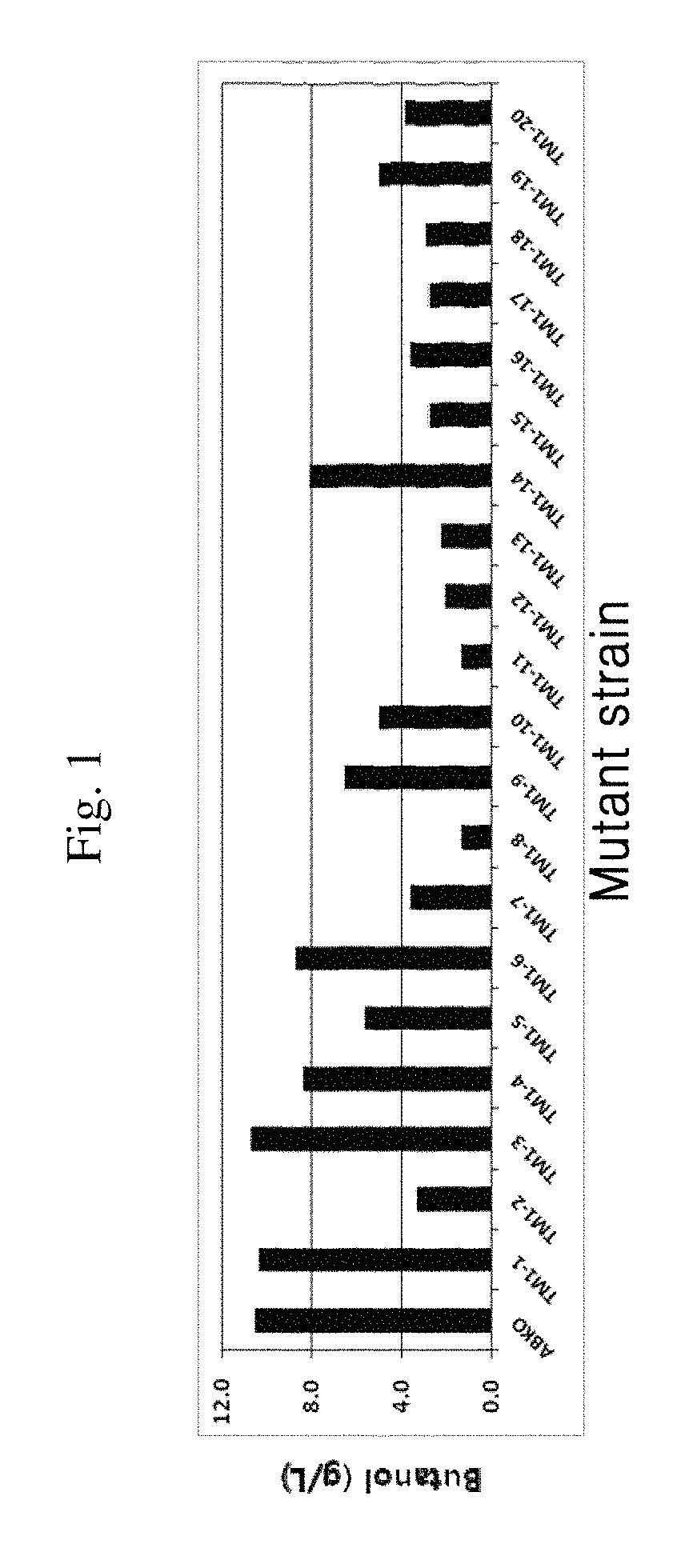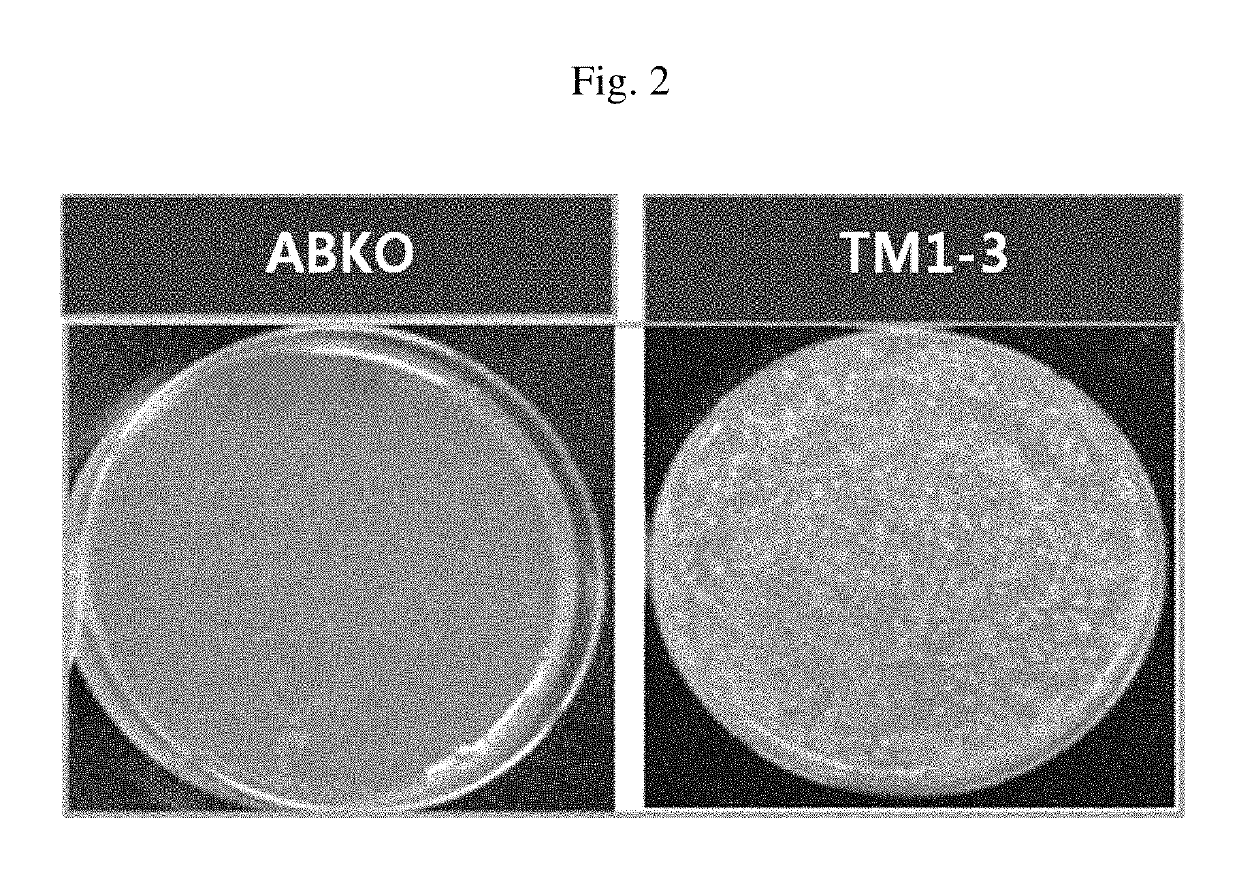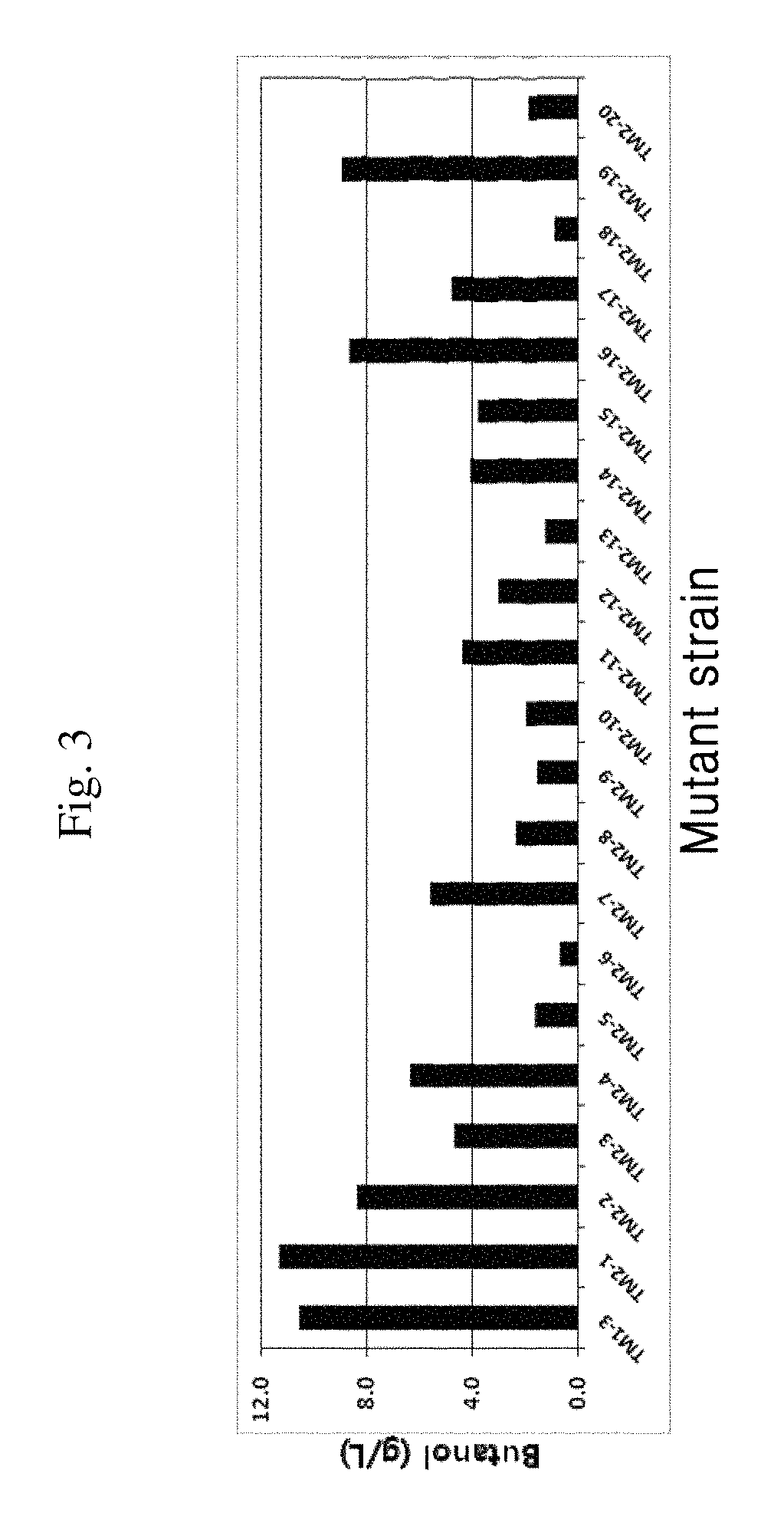Microorganism capable of simultaneous co-fermentation of mixed sugars and production method of butanol using the same
a technology of mixed sugar and microorganisms, which is applied in the direction of biofuels, enzymology, transferases, etc., can solve the problems of rising crop prices, raw material costs accounting for 60% of production costs, and use as raw materials, and achieve high selectivity
- Summary
- Abstract
- Description
- Claims
- Application Information
AI Technical Summary
Benefits of technology
Problems solved by technology
Method used
Image
Examples
Embodiment Construction
[0024]The present invention relates to a microorganism capable of simultaneous co-fermentation of two or more sugars in a lignocellulosic hydrolysate hydrolysate and having butanol productivity.
[0025]In addition, the present invention relates to a method for producing butanol, including: preparing a medium including two or more sugars; inoculating the medium with a microorganism; and culturing the microorganism.
[0026]Further, the present invention relates to a recombinant microorganism capable of simultaneous co-fermentation of two or more sugars in a lignocellulosic hydrolysate and having butanol productivity, wherein a pathway converting butyryl-CoA into butanol or a pathway converting butyrate into butyryl-CoA is promoted, and butanol productivity is increased.
[0027]Furthermore, the present invention relates to a method for producing butanol, including: preparing a medium including two or more sugars; inoculating the medium with a recombinant microorganism according to the presen...
PUM
| Property | Measurement | Unit |
|---|---|---|
| pressure | aaaaa | aaaaa |
| concentration | aaaaa | aaaaa |
| concentration | aaaaa | aaaaa |
Abstract
Description
Claims
Application Information
 Login to View More
Login to View More - R&D
- Intellectual Property
- Life Sciences
- Materials
- Tech Scout
- Unparalleled Data Quality
- Higher Quality Content
- 60% Fewer Hallucinations
Browse by: Latest US Patents, China's latest patents, Technical Efficacy Thesaurus, Application Domain, Technology Topic, Popular Technical Reports.
© 2025 PatSnap. All rights reserved.Legal|Privacy policy|Modern Slavery Act Transparency Statement|Sitemap|About US| Contact US: help@patsnap.com



